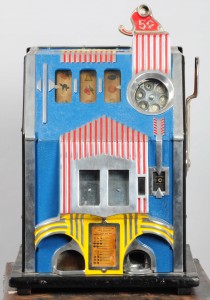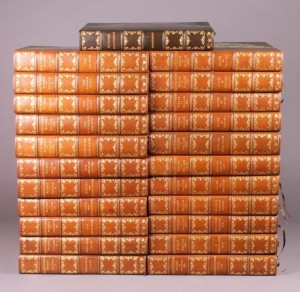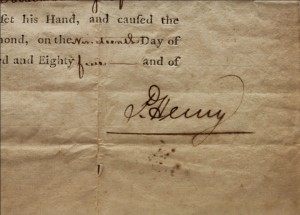Buying antiques and fine art is a very enjoyable experience but can have its pitfalls for both professional dealer and amateur alike.
In this short guide, I hope to be able to give an insight in how many dealers operate in the international market. This is by no means a definitive working practice in every case, and the views presented here are simply personal ones based upon 20 years of experience. Nevertheless, I believe that they have some merit and have served me well over the years.
Firstly, a professional dealer is no different from a private collector or individual when it comes to making a purchase. What many people forget is that dealers are also owners of their stock. They put their money where their mouths are in the hope that they can turn a profit. Sometimes the market is such that they cannot sell an item for many years, or if they do will have to take a loss on their original investment. It happens to every dealer at some stage, but that is the learning curve they, and everyone else for that matter, is on. We are all just fallible after all. This brings us nicely to a set of informal buying stages that I operate by on a typical transaction. So here is the first.
Stage 1
Do you love the item? Forget the investment potential. Forget the price. Forget any selling schpeel or scarcity of the piece. Forget the worry of where you’ll put it at home. Simply, do you like it? How do you respond emotionally to it? Whether you are an individual or dealer, only you can really decide this.
OK, so you’ve fallen in love with a piece. Now what?
Stage 2
Can you afford it? So let’s say that the piece you have chosen has an affordable price tag – and by that I mean on a personal level you will be able to pay for it without mortgaging your home or selling your children! Only you can gauge this, and the same also applies to the dealer. After all, they could be stuck with it for sometime and not be able to free up their working capital.
Stage 3
What price are you prepared to pay? This is where for the most part the dealer has the edge on a private client. It is their specialist knowledge of market prices and current trends, which will assist them greatly in completing a sale, that will in turn be driven by their business margins.
So how can an individual ‘compete’ with a dealer? Well there are many ways, which we’ll touch on later in the article, but here is the main one. Research.
It’s somewhat obvious, but if you are buying anything with a signature, try to research the artist. If the piece is attributed to someone, what is the basis for the seller claiming this? This is also loosely described as provenance – the holy grail of authenticity.
Provenance could include, but not be limited to, anything from a verifiable source of past ownership to documentation proving the substance of the piece. It may also just be a gut feeling for example where an old lady has had something in the family for as long as she can remember. Remember this though, never take anyone’s word for what you are looking. It may be that the seller is simply trying to turn a quick profit and hasn’t dug too deep into an items value in either direction.
Now I’m not advocating a cynical view to buying. For the most part private and trade sellers are honest people simply trying to make a profit and not deceive, but it is amazing how often this lack of research happens. If you don’t believe me, look at the many stories of hugely valuable treasures being discovered at car boot (garage) sales or in auction. Remember the Chinese vase that sold in the UK for in excess of £45m, well that was valued earlier by a dealer at £800. Ooops. You can’t be an expert on everything, so the lesson here, is do your research. You may not get it right every time, but it will pay dividends in the long run.
But where and how I hear you ask? Well you’ll find that the internet is a hugely valuable and free resource for this. There are also subscription based services which will track a particular artist or edition in the salerooms worldwide. See Benezit online (soon to be launched), Artprice etc.
The internet has really changed the way the way in which we shop and consume all sorts of products. For the novice, it is an invaluable tool for researching whether there is a similar item for sale, and at what price, or to simply learn more about the piece you are about to purchase. Within the trade, there are mixed views about this, mostly because this kind of market intelligence was predominantly the domain of the professionals and it is seen as somehow weakening the commercial advantage. I’m of the opinion though that this sea-change of the way we now acquire art it is a good thing, as in the long run it benefits everyone dealing in expensive works of art and raises the reputation and transparency of those bona fide dealers.
Now a word of warning here about using auction salerooms as valuation indicators. An auction price is simply a measure of what someone is prepared to pay for a piece in a competitive environment – nothing more, nothing less. Along with frequency of appearance on the open market, these are broadly how market prices are ‘set’ for an item or artist. Remember Stage 1? That is principally what is at work here and why dealers and private individuals get carried away and sometimes pay beyond their set limit. Then again, that’s the excitement of a ‘room’ – they are environments that provoke tests of nerve, bank balances and many times a large measure of egos thrown in.
If you’ve never been to an auction, then I urge you to go. They are great fun, but if you do happen to see something you want, set your limit and stick to it. A useful trick is to imagine yourself as a big cat hunting on the plains of Africa and your prey is an auction item. Sometimes you’ll give chase and be successful, but more often than not you’ll have to let it go to conserve your energy (read money!) and live to hunt again. If you do get carried away though, don’t worry. We’ve all done it, and at the end of the day you’ll come away with something you love. Right?
Ok, enough of the analogies. You get the picture. Back to the matter in hand. What do you pay? If you are a private client, the answer to that is, what is it worth to you? Assuming that you have done your research, the piece checks out and you love it, what’s the next move. How do you actually negotiate a sale and what do you say and do? Here are my thoughts on this.
The anatomy of a sale:
a. Now I’m a great advocate of telling a seller that you love the piece. It doesn’t weaken your position. This is a Stage 1 statement and nothing to do with what you will ultimately pay. This doesn’t mean that you’ll not have any bargaining points either; it simply aligns you with the seller on an emotional level. You can even get into a bit of small talk on where they found it and how long they’ve had it etc.
b. As an opener, ask the dealer what their best price is. If they try to draw you on what you’d be prepared to pay, simply joke with them and tell them that you can’t be both buyer and seller!
c. If you think that the piece is worth 40% less than they are asking (this is a bit extreme), then tell them that you see it at 50% less than what they are asking (this will give you a bit of a buffer). The principle here is start low and keep it friendly. You can always go up, but never down. Once the seller has regained consciousness (!) they’ll probably tell you to get lost.
d. At this point you’ll need to reinforce that you love it and you are serious. You can do this by saying ‘look, this artist /sculptor/item recently sold for X amount in auction’. It shows you have done your research. If they haven’t done the same then you’ll have an advantage. If their asking price is close to the last auction room sale, try to average out the previous saleroom performance for the piece/artist. If the seller is insisting that this is the value then you can always say that on the day that’s what someone was prepared to pay and today is another day. Remember to keep it light and friendly. Don’t get ruffled or intimidated by a sellers apparent indignation at your offers.
e. Ask them where they ‘see it’. They’ll probably drop a bit.
f. At this point start to focus attention on the item. Is it in perfect condition? Has it been repaired or restored, all of which can affect value. Is there something that you can use to reduce the price e.g. is it a picture which needs reframing or relining? Perhaps it’s a bronze which needs repatinating. Remember to reinforce that ‘you love it but because of XYZ you see it at X price.
g. It is not uncommon at this stage for a seller to tell you that your offer is lower than what they paid for the item. This may or may not be true, but most dealers will have at least a 20% margin in the piece, so even at this level you’ve got, say, a 10% discount you could negotiate.
h. Assuming that you are both engaged in the negotiating process (in as much as there have been at least three price movements of at least 5% (of original asking price) and moving closer to a ‘strike price’ you’ll find that at this point the going will probably get tougher.
i. You can either agree to the sale if you think it’s fair or decide on a more extreme tactic of calling the sellers bluff and walking away. Stand up and say something like. ‘Look, you know I love it, but we’re just too far apart. I can do X amount’. This can provoke them to agree to your price or it may not. If not, walk away. Now you may be willing to pay more and think you may have blown your chances, but you haven’t. So where to now?
j. Spend some time to think and calm down. Do you still love the item? Can you make the ‘strike price’? What really is your limit?
k. OK. Final round. You go back to the seller. Say something like ‘Well I’m back. I just can’t forget that picture/sculpture/piece. Look, what is your very, very best on it?’ They may make some final concession which is within your top limit, or they may not budge at all. You’ve probably got only another couple of price moves here at the most.
l. So now it’s crunch time. You’ll have three options. You agree on your maximum price, agree to pay more, but only if that includes any repairs, shipping, etc (or whatever else you can negotiate), or you walk away (remember the hunting analogy).
So that’s kind of it. Every sale will be different. You will win, but some of the time you will lose.
If you remember to do only one thing, it’s engage with your heart, but negotiate with your head.
You won’t go too far wrong with this strategy. Good luck and happy hunting!
R. Santana / Palladium Fine Art Brokerage
© Copyright 2012
www.palladiumfineart.com



